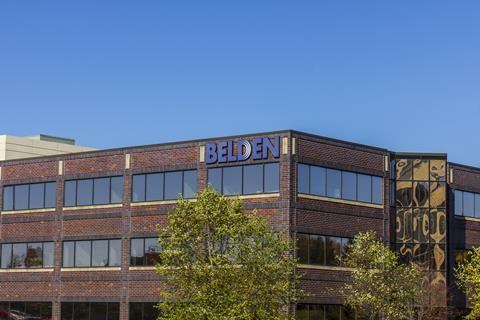In part three of our M&A series, Andy Stout looks at the future of consolidation in the broadcast and media space.

Activity around mergers and acquisitions is constant background chatter across most industries for a variety of different reasons, some industry-specific, some related to the wider economic backdrop. Recently though that chatter has risen to a definite murmur that catches the ear in the broadcast space, both in terms of activity confined to the vendor community and in terms of broadcasters looking to acquire new technology. Indeed, some of the deals which have seen broadcasters chase down tech, which was a significant factor in Comcast’s $38bn acquisition of Sky, for instance, have been nothing short of deafening.
- Read more in part one: M&A: Vendor consolidation continues
- Read more in part two: M&A: Broadcasters search for scale
The current drivers are multiple. But, looking at vendor activity first, lying at its heart is the simple fact that if you tot up the number of companies on the showfloor of any major tradeshow and then divide the available industry revenue between them, the numbers rarely add up and the ongoing effort is not sustainable.
Adam Cox, head of imaging & pro video at Futuresource Consulting points to the fact that M&A is not only part of the natural economic cycle or a market, but also a signal that a particular market has likely progressed beyond its peak.
“Inevitably the technology matures, markets become commoditised, value declines and it becomes increasingly difficult to maintain competitive advantage,” he says. “So, companies identify the “next big thing”, strategically acquire competitors to expand their technical capabilities and afford themselves a larger slice of the market, the revenue from which then gets reinvested in new technology.”
He sees three current drivers of activity between vendors at the moment and provides solid examples of each.
“Three key drivers have been: gaining geographic advantages, such as SAM being stronger in Europe than Grass Valley; gaining access to new markets; eg Vizrt being stronger at the high end of the market and NewTek weighted more towards the mid-level and low end as well as verticals outside of broadcast; and gaining access to new technologies for strategic purposes. For example, Amazon Web Services acquiring Elemental.”

There are other factors at work too. As Belden CEO John Stroup has noted, there is plenty of gross margin available in the broadcast business, but few companies are making profit. If, however, you are confident in applying an efficient business model to a new acquisition, and able to take advantage of any subsequent economies of scale, then there is the opportunity to maximise profit for shareholders.
There is an interesting caveat here which is illustrated below by Grass Valley’s VP marketing, Neil Maycock, however, in that the choices made during the process of joining two companies together can have definite knock on effects on the overall success of the project.
“In the past when two businesses came together with overlapping product lines, we consolidated them - and then, of course, you alienate large chunks of your customer base. With the Grass Valley acquisition of SAM, we thought we wouldn’t do that and its paid dividends. People said, “You can’t maintain two switcher lines,” but once the product is developed its minimal factory overhead to maintain them. Keeping your existing customers happy and working on a next generation platform that all your customers can migrate to seems to be a much healthier way of going about things; letting product lines go through their normal product life cycle helps bring customers with you and we have metrics showing that we maintained 100% retention through the integration of the businesses as a result.”
Another factor worth pointing out is that the nature of the industry has changed markedly over the past few years. Where once a customer would bring together a host of niche innovators with differentiated products to build a best of breed, multi-vendor system, one of the consequences of an increasingly virtualised, software-driven broadcast environment that runs on COTS hardware is that customers want a) the same sort of company-wide scale they would apply to a SAPS deployment and b) the ability to drive the process themselves.
“The relationship between broadcasters and technology suppliers has changed completely compared to the past,” comments Lorenzo Zanni, lead research analyst at the IABM. “Broadcast organisations are consolidating and they are increasing their buying power when it comes to purchasing technology. And when we talk to organisations they have a closer relationship with vendors than before; they’re working together towards customer solutions with end users driving the agenda of the vendors That is a big shift from the past when vendors were in control of what technologies were going to be adopted by the end users.”
Broadcast consolidation
For broadcasters, content monetisation is seen as one of the primary drivers especially as they manoeuvre to cope with the globalising presence of the SVOD giants.
“There are a lot of joint initiatives between broadcasters which actually translates into a consolidation of technology spend”
“Most of the investments have been in this area, such as RTL buying Yospace and SpotX or Disney buying BAMTech,” says Zanni. “There are a lot of joint initiatives between broadcasters as well, which actually translates into a consolidation of technology spend.”

He adds that it was thought that Europe was going to consolidate quicker than it has done, especially on the fragmented commercial side. The US has moved much more quickly, with the theory being its progress there has been driven by increased competition and the pressures of cord cutting.
At analysts IHS Markit, associate director Merrick Kingston points to the fact that many of the broadcaster acquisitions have fallen under the banner of acquiring an Online Video Player (OVP).
“We are seeing more direct to consumer offerings, from a pay-TV operator perspective we see diminishing reliance on the broadcast medium as a distribution platform compared to OTT, so any media company needs a backend and a platform to operate a service who’s quality meets or exceeds what we have in the broadcast medium today,” he says. “That’s not easy to do and there’s a great case for buying a firm that has already borne the cost of all the R&D that goes into building a market-proven platform. It can be done in house, but I’m not sure the return on that relative to the raw cost of the R&D is particularly favourable.”
He also points out that while OVP acquisition can also act as a mechanism to withdraw a technology from the market and therefore rival companies, it is also an investment and an important part of any ROI in this case will be a revenue stream, albeit a selective one that probably excludes certain competitors.
“There is no question in my mind that Disney expects a revenue stream to accrue from BAMTech’s continued sale of services to external parties,” he says.
- Read more: Disney completes $71.3bn Fox acquisition
Future targets for M&A
The likelihood is that M&A activity will continue at the same level of background noise with occasional bursts of static, with the result that steadily bigger companies have steadily bigger clients. That’s not a totally homogeneous picture, though, as some areas of technology certainly give off more heat than others. An industry increasingly based around software development has lower barriers to entry for companies; there is no hardware to design and no need for manufacturing capacity, internal or outsourced, to build it. As a result more, smaller companies are entering the market at just the time as larger ones are looking to acquire new technology, especially in the field of digital advertising, content monetisation, anything to do with OTT and, of course, the current white hot area of artificial intelligence and machine learning.
The ability of a company such as AWS to take something that was a product, virtualise it, and offer it as a commoditised service via the cloud is genuinely disruptive. Lots of eyes are trained on it as a result. And there is also widespread agreement that the agility of small companies to offer cloud-based services, especially where machine learning is involved, makes them likely prospects for acquisition as industry investment tracks wider technology development in other fields. Meanwhile, the search for scale continues.
“There is little growth in mature markets such as North America and Western Europe for many product areas,” says Cox, “So it is not surprising that companies are looking to maximise potential in these markets by taking advantage of existing sales, marketing, and distribution networks of other companies.”
M&A: Vendor consolidation continues
- 1
- 2
 Currently reading
Currently readingM&A: Current drivers and future directions
- 3


























No comments yet